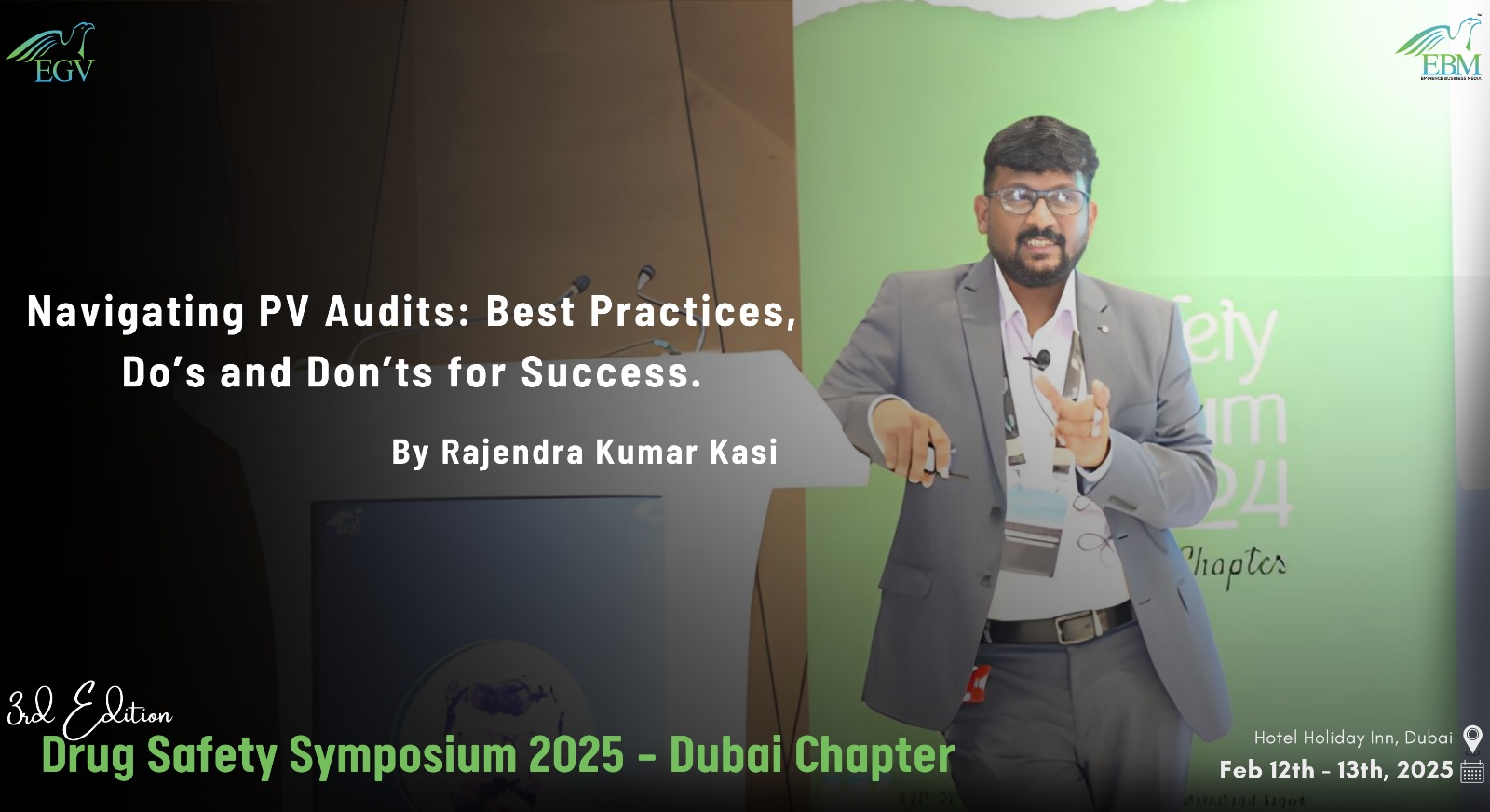
Rajendra Kumar Kasi, Vice President and Global Head – Pharmacovigilance, Glenmark in conversation with Team Eminence Business Media
Pharmacovigilance audits are vital to ensuring that pharmaceutical companies meet regulatory guidelines and, more importantly, protect patient safety. These audits ensure that companies follow rigorous protocols for detecting, assessing, and preventing adverse drug reactions. It was a pleasure to have Rajendra Kasi at the Drug Safety Symposium 2024 in Mumbai, where his insightful presentation on Navigating PV Audits garnered appreciation from the delegates. While PV audits can seem daunting, success lies in thorough preparation and adherence to best practices. We took the opportunity to sit down with Rajendra Kasi to dive deeper into the critical details of PV Audits. In his unique and engaging style, Rajendra shared the significance of these audits with some fun facts and real-world case studies to keep things interesting!

Why PV Audits Matter
Pharmacovigilance is the cornerstone of patient safety. Regulatory bodies like the FDA, EMA, and MHRA have made it mandatory for companies to report adverse drug reactions. This ensures that new risks are promptly identified and mitigated. Audits assess whether these processes are being followed meticulously.
Fun Fact: Did you know the World Health Organization (WHO) coined the term “pharmacovigilance” in the 1960s, shortly after a batch of thalidomide caused serious birth defects in newborns? This led to the creation of the global drug safety monitoring system we know today.
Best Practices for PV Audits
- Be Audit-Ready at All Times: The best strategy is to always be prepared, as audits can sometimes come unannounced. Ensure all your pharmacovigilance records, SOPs, and documentation are updated regularly, and your system is audit-ready.
- Comprehensive Documentation: One of the first things auditors will scrutinize is documentation. Ensure that all case reports, adverse event data, and safety agreements are accurately filed and easily accessible.
- Internal Audits as Practice: Conducting internal audits allows you to simulate the real audit experience. By practicing, your team will be more confident and organized when the actual audit occurs.
- Regular Staff Training: Keep your team trained and up-to-date on the latest pharmacovigilance regulations. This will ensure that your employees can respond quickly and correctly during an audit.
- Collaboration is Key: Foster a culture of collaboration between departments and partners to ensure all necessary information is shared and available for the audit.
The “Almost Audit Disaster”
In 2021, a major pharmaceutical company underwent an unannounced audit. Despite having robust pharmacovigilance systems in place, the company faced an issue: they had not conducted any internal audits for over a year. As a result, many documents were outdated or missing. Although they managed to provide some last-minute justifications, the final audit report called for significant corrective actions, which took months to complete.
Lesson Learned: Always perform internal audits to identify and fix gaps before regulators do.

Do’s for a Successful PV Audit
- Do establish a culture of continuous compliance. Encourage employees to adopt a proactive approach to regulatory compliance rather than waiting for audit deadlines.
- Do perform periodic gap analyses to assess your pharmacovigilance system and detect weak points. Fix issues as soon as they are identified to avoid them being flagged in a formal audit.
- Do communicate effectively with auditors. Ensure that the audit team knows the exact locations of requested documents, files, or systems to avoid confusion.
Fun Fact: Did you know that companies caught hiding data in pharmacovigilance audits can face hefty fines and even criminal charges? In 2013, a pharmaceutical company was fined over $3 billion for failing to report safety data properly.
Don’ts for a Successful PV Audit
- Don’t wait until the last minute to prepare. Audits can expose long-standing issues, and rushing to patch things up will only make matters worse.
- Don’t overlook the importance of corrective actions. If any issues are identified during an internal or external audit, take the time to implement the corrective measures fully and document the process.
- Don’t provide incomplete or unclear information. Any hesitancy or uncertainty in responding to auditors can raise red flags. Make sure that all your data, reports, and systems are thoroughly checked and verified.
Audit Myths Busted!
Myth: “Auditors are there to fail you.”
Truth: Auditors are there to ensure compliance, not to fail you. Think of them as helping to improve your safety protocols!
Myth: “Once you pass an audit, you’re in the clear for years.”
Truth: Audit frequency depends on the risk level. High-risk products or poor past performance can lead to more frequent audits.
Conclusion
Navigating a PV audit doesn’t have to be an overwhelming experience. By following best practices, conducting internal audits, and maintaining clear documentation, companies can not only pass these audits but thrive in the post-audit environment. “Remember, it’s not just about compliance; it’s about ensuring patient safety and building trust with regulators,” concluded Rajendra Kumar Kasi, Vice President and Global Head – Pharmacovigilance, Glenmark.

———–
* Disclaimer: The views expressed in this post are my own and do not necessarily reflect the views of my organization.
Let’s connect, share, and create meaningful conversations!

